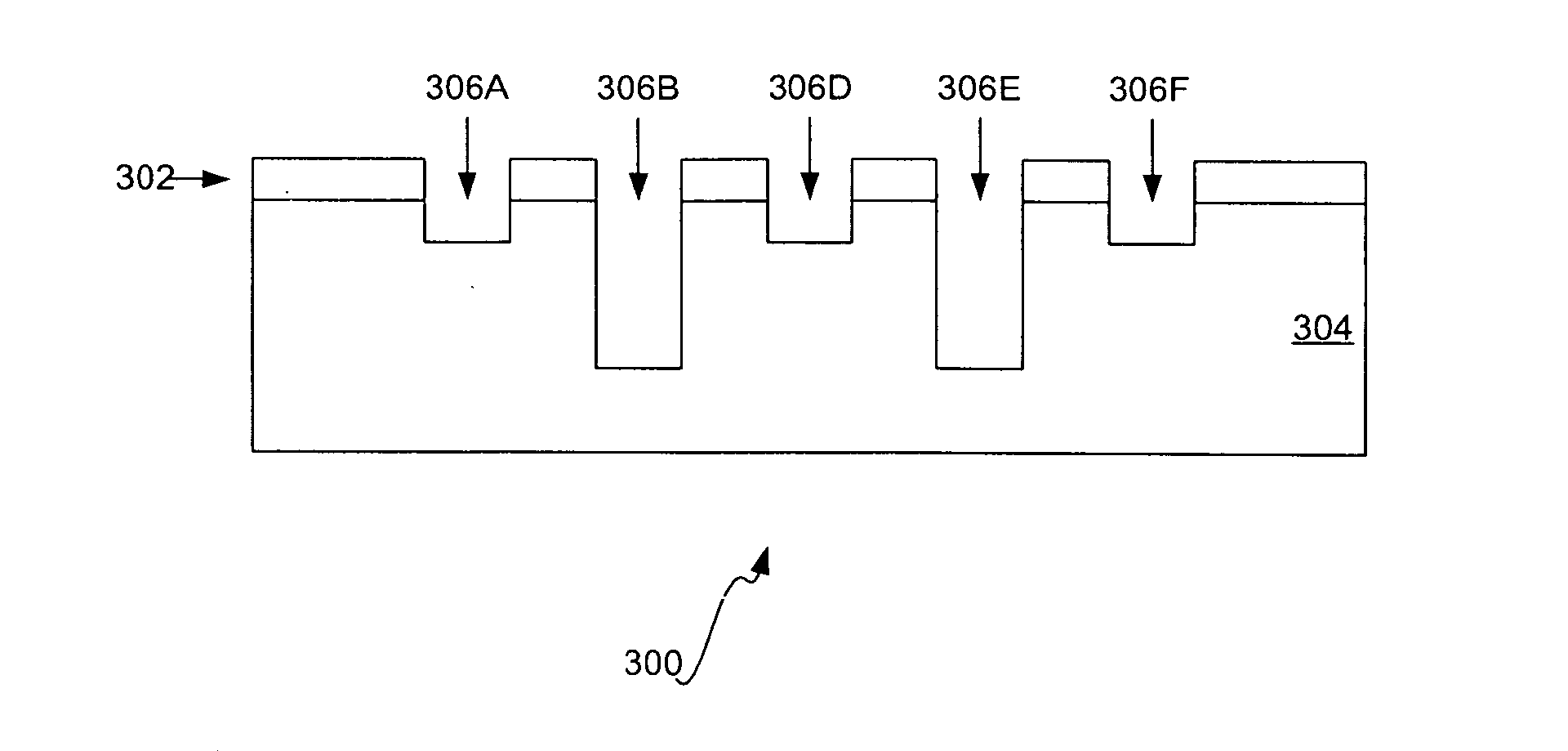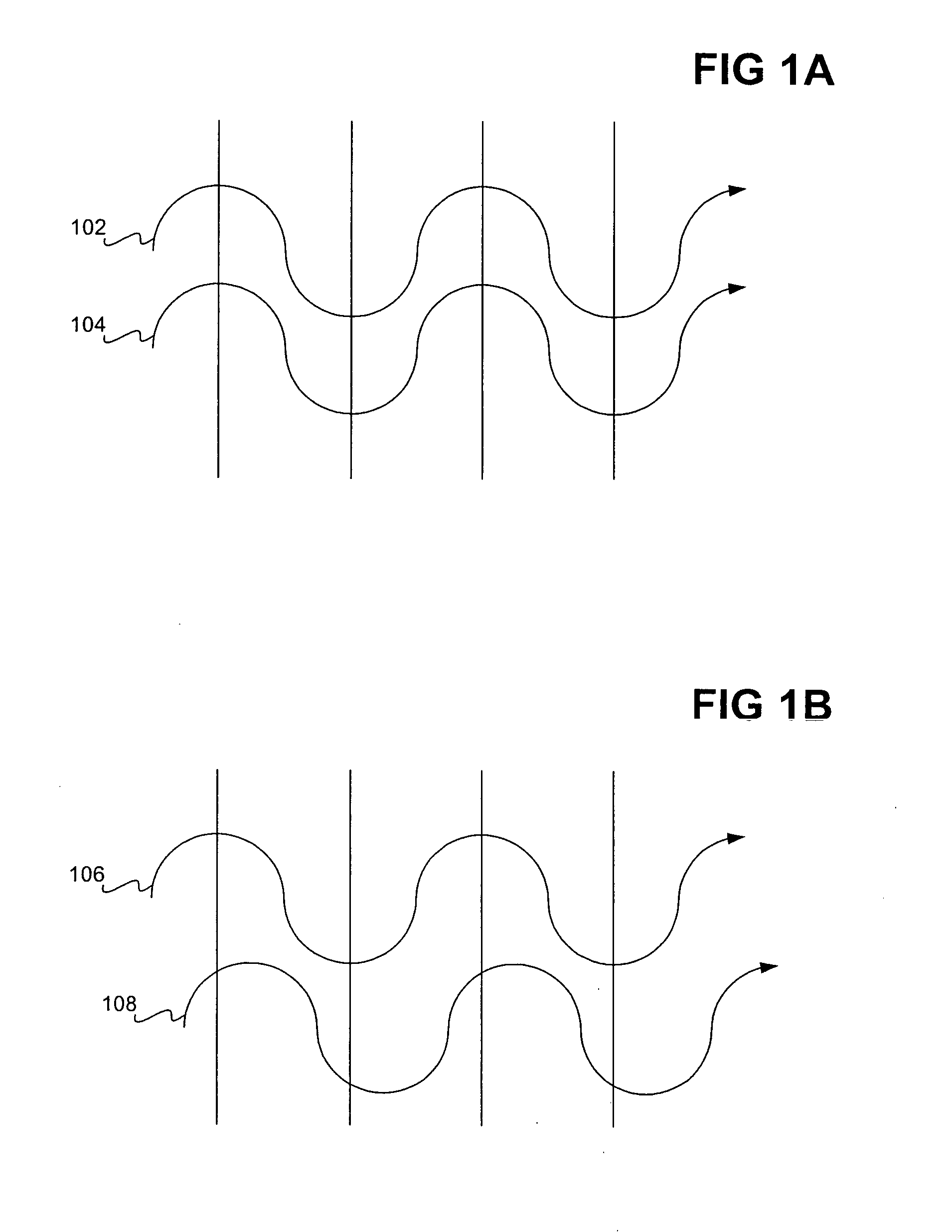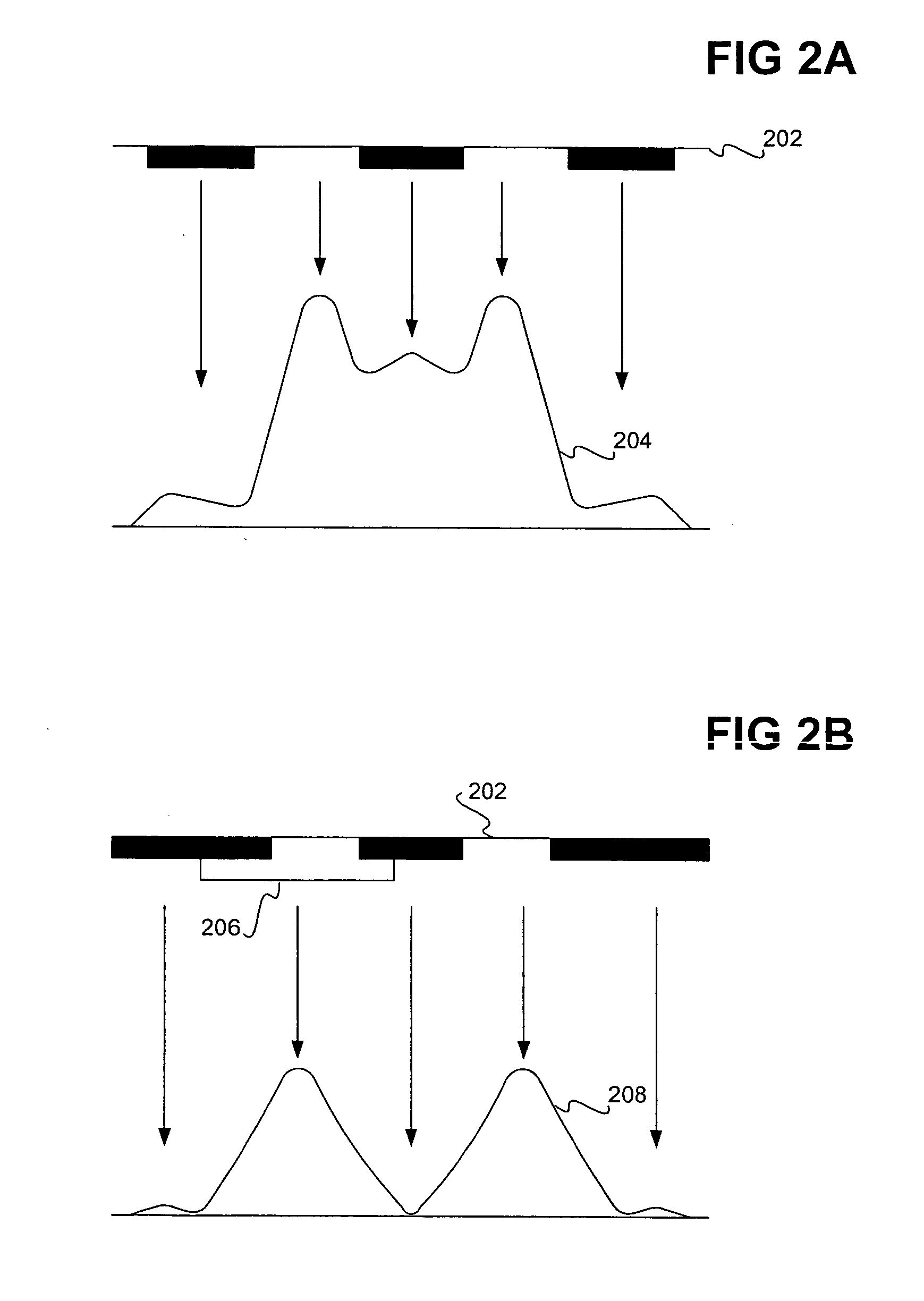Dual trench alternating phase shift mask fabrication
a phase shift mask and dual trench technology, applied in the field of semiconductor device fabrication, can solve the problems of large lithographic process burden, difficult resolution of anything smaller than a wavelength, and sub-wavelength lithography, and achieve the effects of reducing the overlay error, and reducing the cost of induced anti-reflective layer loss
- Summary
- Abstract
- Description
- Claims
- Application Information
AI Technical Summary
Benefits of technology
Problems solved by technology
Method used
Image
Examples
Embodiment Construction
[0024] In the following detailed description of exemplary embodiments of the invention, reference is made to the accompanying drawings that form a part hereof, and in which is shown by way of illustration specific exemplary embodiments in which the invention may be practiced. These embodiments are described in sufficient detail to enable those skilled in the art to practice the invention. Other embodiments may be utilized, and logical, mechanical, and other changes may be made without departing from the spirit or scope of the present invention. The following detailed description is, therefore, not to be taken in a limiting sense, and the scope of the present invention is defined only by the appended claims.
[0025]FIGS. 5A and 5B show a method 500 to construct a dual-trench alternating phase shift mask (PSM) according to an embodiment of the invention. In FIG. 5A, a photoresist layer over a chromium layer is first exposed according to a semiconductor design (502), such as by e-beam w...
PUM
 Login to View More
Login to View More Abstract
Description
Claims
Application Information
 Login to View More
Login to View More - R&D
- Intellectual Property
- Life Sciences
- Materials
- Tech Scout
- Unparalleled Data Quality
- Higher Quality Content
- 60% Fewer Hallucinations
Browse by: Latest US Patents, China's latest patents, Technical Efficacy Thesaurus, Application Domain, Technology Topic, Popular Technical Reports.
© 2025 PatSnap. All rights reserved.Legal|Privacy policy|Modern Slavery Act Transparency Statement|Sitemap|About US| Contact US: help@patsnap.com



